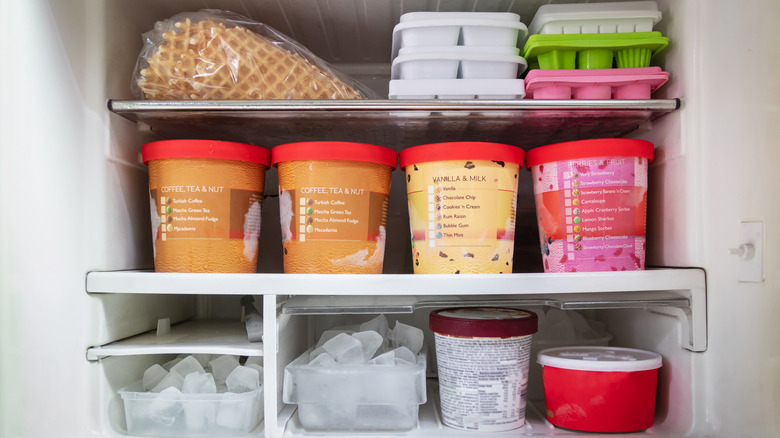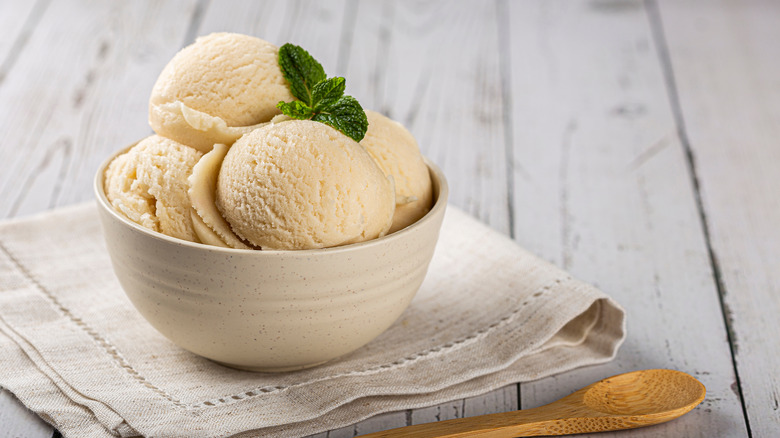The Freezer Storage Tricks That Will Make Your Ice Cream Taste Way Better
You can go on about how good it is to get out of that summer heat with a quick jump in the pool or a trip down to the boardwalk. Sure, those are great ideas, but ask yourself this — is there anything better than coming in after a hot day outside, feeling the cold air conditioner hit you with that refreshing chill, and going to the freezer to scoop yourself a big bowl of ice cream?
It's no secret that when the heat goes up, so do ice cream sales. A report from Store Brands shows the ice cream market is in no danger of melting soon, and is expected to reach a cool $114.7 billion by 2030. In fact, back in 1984, then-U.S. President Ronald Reagan declared July National Ice Cream Month (via International Dairy Foods Association), only furthering the connection between the hottest season of the year and this beloved cold treat.
But as delicious as ice cream is, it's prone to many hazards that could ruin your ice cream experience. You may one day find your rocky road has suffered from a severe case of freezer burn, or you may find that your carton of mint chocolate may have frozen into an inedible block. Fortunately for you, we have a few freezer tricks that'll keep your ice cream cool and delicious.
Store your ice cream in the back of the freezer
Insider recently asked a combination of chefs and "ice cream developers" to give their advice on one question — how can you make your average carton of store-bought ice cream taste better? While several interesting tips were given, some focused on how to properly store the ice cream in the freezer.
One suggestion is to ensure that the ice cream is placed in the back of the freezer, where it can remain closer to the cold air. By putting it up front where it's closer to the warmer air outside, the ice cream can melt and re-freeze, leading to the formation of ice crystals. The back of the freezer is much colder, avoiding the formation of ice and half-melted ice cream.
Perhaps one of the most surprising tips is that it's best not to put ice cream near any sort of unpleasant-smelling frozen foods. According to a report from Cornell College of Agriculture and Life Science, "raw or pasteurized milk products can absorb flavors during production, storage, and distribution." Since many ice creams are produced with milk, this may cause the ice cream to develop unpleasant flavors when left next to certain products, such as frozen vegetables, if left near them for too long. Who knew?
If you're not one for store-bought ice cream and instead prefer the classic fresh-scooped stuff, maybe check out the best ice cream shops in each state to see if there's a legendary ice cream parlor near you.

